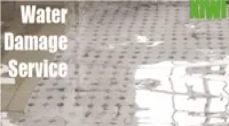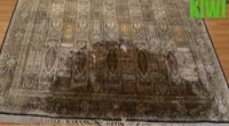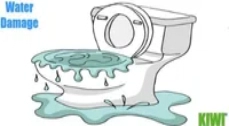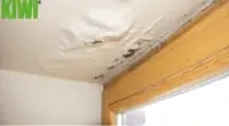Storm Damage Cleanup And Restoration

Immediate Dispatch 24/7.
39 Years Of Water Damage Restoration Experience.
Pro Water Damage Certified Technicians.
96% On-Time Track Record.
Work Directly With Your Insurance Company.
3-Year Guarantee On Our Restoration Services.
Licensed, Bonded, And Insured.


Professional Storm Damage Cleanup and Restoration Services by Kiwi Services
No one ever expects that a major storm is going to damage their home—until it happens to them. Flooding can happen in just a few moments, and the water damage from a major storm can potentially wreak havoc on your beloved home. Worst of all, storm damage emergencies rarely happen during regular business hours, meaning that you often have to figure out what companies are available to help in the middle of the night.
When it comes to flooding and storm damage cleanup, you have to turn to an expert you can trust. Kiwi Services is here to help you during storm damage emergencies with our 24/7 water damage restoration services that are professional, swift, and gets the tough job done when you need it the most.
Here’s how our damage cleanup and restoration process works.
Immediate Steps to Take After a Storm
Safety Precautions
After a storm, your immediate priority should be ensuring personal safety and protecting your property from further damage. Here are some essential steps to follow:
Ensuring Personal Safety
- Avoid Downed Power Lines: Storms can cause power lines to fall, posing a significant risk of electrocution. Stay away from any downed or damaged power lines and report them to your local utility company immediately. If you see someone in contact with a downed power line, do not attempt to rescue them yourself; instead, call emergency services.
- Beware of Flooded Areas: Floodwaters can contain hazardous materials, sharp debris, and contaminants. Avoid walking or driving through flooded areas. If you must travel through water, use a sturdy stick to check the ground in front of you for holes, submerged debris, or other hazards.
- Check for Gas Leaks: If you smell gas or hear a hissing sound, there may be a gas leak. Evacuate the area immediately and call your gas company from a safe location. Do not use electrical switches, phones, or anything that could cause a spark.
- Inspect Your Home Safely: Before entering your home, check for structural damage, such as cracks in the foundation, sagging roofs, or broken support beams. If you have any doubts about the safety of your home, wait for a professional inspection before entering.
- Stay Informed: Keep up-to-date with local news and weather reports to stay informed about ongoing risks and recovery efforts. Follow the instructions and advice of local authorities and emergency services.
Protecting Your Property
- Tarp a Damaged Roof: If your roof has been damaged, cover the affected area with a tarp to prevent further water intrusion. Secure the tarp with nails or heavy objects to keep it in place until professional repairs can be made. This temporary measure can help minimize water damage to your home’s interior.
- Remove Valuable Items from Flooded Areas: If it is safe to do so, move valuable items, such as electronics, important documents, and sentimental items, to a dry area. Elevate furniture and appliances to prevent water damage, and place items on shelves or in waterproof containers.
- Board Up Broken Windows: Broken windows can allow rain and debris to enter your home. Use plywood or heavy-duty plastic sheeting to cover broken windows and secure them with nails or screws. This will help protect your home from further damage and prevent pests from entering.
- Turn Off Utilities: If you suspect damage to your electrical system, water pipes, or gas lines, turn off the utilities at the main switches or valves. This can prevent further damage and reduce the risk of fire, electrical shock, or flooding. Only turn the utilities back on once they have been inspected and deemed safe by professionals.
- Document Damage for Insurance Claims: Take photographs and videos of the damage to your home and belongings. This documentation will be essential for filing insurance claims. Keep a detailed record of any temporary repairs you make and the expenses incurred.
- Prevent Mold Growth: Mold can start growing within 24-48 hours of water exposure. To prevent mold growth, start the drying process as soon as possible. Use fans, dehumidifiers, and open windows to increase airflow and reduce humidity. Remove wet carpets, rugs, and upholstery to a dry location.
By following these safety precautions and taking immediate steps to protect your property, you can mitigate the impact of storm damage and begin the recovery process more efficiently. For professional assistance with storm damage cleanup and restoration, contact Kiwi Services. Our experienced team is available 24/7 to help you restore your home and ensure your safety.
The Water Damage Restoration Process
When you have water damage that needs cleaned up, you don’t have time to mess with a company that doesn’t know what they’re doing or how to help. Our disaster recovery team are experts in what they do and can determine exactly where to start the storm damage cleanup process so you can get back in your home safely—and soon.
Once you call our 24-hour emergency water damage hotline, here’s what you can expect:
- We’ll immediately dispatch a team of industry certified experts and assign a customer service representative to oversee the project.
- Upon arrival to your home, we’ll survey the damage and immediately begin water extraction.
- Once the water extraction process has begun, we will clean affected items such as upholstery, carpets, furnishings, and take water damaged rugs to our facilities for restoration treatment.
- We’ll apply an antimicrobial agent to the walls and floors, which limits further damage caused by mold or mildew.
- We’ll take initial humidity and moisture readings prior to starting the drying process and then start to tear out any non-salvageable drywall, wood floors, cabinets, insulation, and baseboards.
- Throughout the process we will bag and dispose of trash and debris, ensuring we have a clean workspace to properly assess the damage.
- Deploying the most up-to-date equipment such as air movers and dehumidifiers, we’ll dry the floors, walls, ceilings, and all affected contents of your home, retaking the humidity and moisture readings daily.
- Throughout the drying, we’ll check for bacterial growth, and mold, mildew, dirt, and dust will be removed and hauled away.
- A re-application of the antimicrobial agent will be done to the walls and the floors. We will also seal the wood studs with a water sealant to insure the prevention of growth.
- Finally, we will clean the concrete floor and conduct an air duct inspection.
During the storm damage cleanup process, we will also provide safe, secure, and dry storage for all of your personal items and can even put our experienced insurance experts in charge of handling your claim for you.
Our goal is to limit the contamination and spread of mold and mildew in your home, which is why we work quickly and are available 24 hours a day, 7 days a week, 365 days a year—because we know that water damage doesn’t exactly happen on your schedule. Need some help with water damage restoration? Call Kiwi Services at 888-685-9918 right away to schedule the service today!
Frequently Asked Questions (FAQ)


















